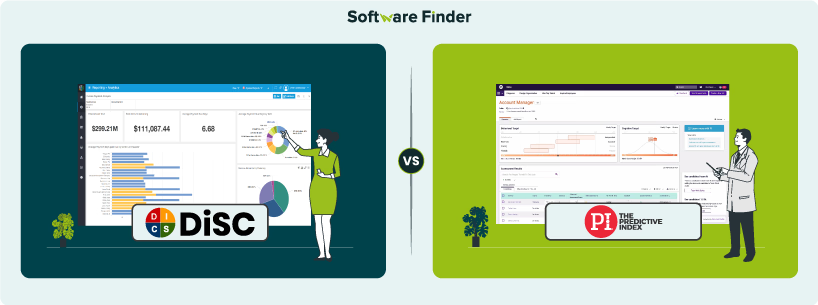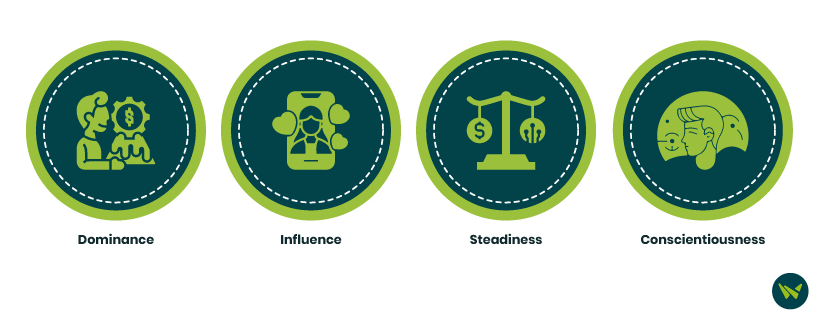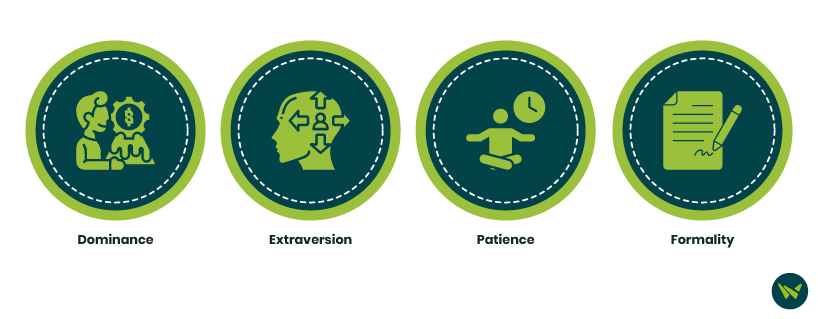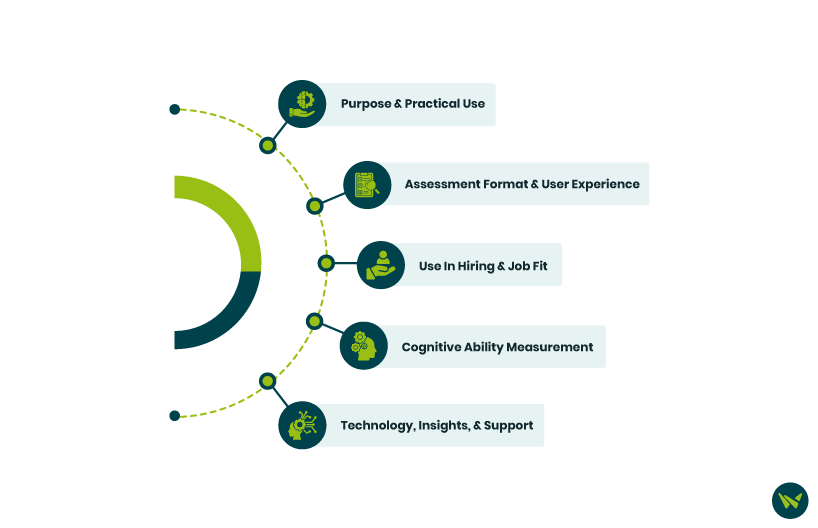
The modern, competitive corporate world requires companies to build smart teams and hire the right talent. In this pursuit, knowing how people work is just as critical as knowing what they can do. That’s where personality assessments come in, and few are as widely used or hotly debated as DiSC and the Predictive Index (PI).
Both tools promise to unlock the secrets of workplace behavior. Both claim to boost performance, communication, and culture. But here’s the real question: Which one actually delivers what your team needs?
In this no-fluff, side-by-side breakdown, we cut through the marketing buzz and take a clear-eyed look at DiSC and Predictive Index: how they work, what sets them apart, and where each one shines (or falls short).
Feature | DISC | Predictive Index |
Theoretical Model | Four-quadrant behavior model | Motivational drive theory |
Assessment Type | Forced-choice behavioral | Free-choice behavioral (plus cognitive optional) |
Measures | Observable behavior | Motivational drivers |
Use Cases | Communication, team building | Hiring, talent optimization |
Duration | ~15–20 minutes | ~6 minutes |
Reports | Easy to read, practical summaries | Detailed analytics for HR use |
Validity And Reliability | Moderate (varies by vendor) | High, with third-party validation |
Integration With Business Strategy | Low | High (via PI’s Talent Optimization Platform) |

DiSC is a behavioral assessment tool based on the work of psychologist William Moulton Marston, introduced in his 1928 book ‘Emotions of Normal People.’ The acronym stands for:
- Dominance – how people respond to problems and challenges
- Influence – how people interact with others and influence them
- Steadiness – how people respond to pace and consistency
- Conscientiousness – how people respond to rules and procedures
This tool categorizes individuals into one or a combination of these styles. Based on this assessment, managers are better positioned to gain deeper insights into their employees’ behavioral patterns. This allows them to tailor communication strategies and assign roles more effectively. It also helps them understand communication preferences, improve team dynamics, and develop interpersonal relationships.
Main Highlights Of DiSC
- Self-reported questionnaire
- Measures behavioral traits, not cognitive ability
- Widely used in team building, leadership development, and conflict resolution
- Non-clinical and easy to understand
Criticism
- Many test variations lack proper validation, leading to inaccurate results
- Complex results require specialized training to interpret
- Misinterpreting results can lead to costly hiring mistakes

The Predictive Index Behavioral Assessment is a science-based tool developed in 1955 by Arnold S. Daniels, inspired by behavioral science and validated over decades. Unlike DISC, which focuses on observable behaviors, PI assesses motivational drives to predict workplace behavior. It’s often used in talent optimization to align business strategy with people strategy.
The Predictive Index identifies four primary behavioral drives:
- Dominance – drive to exert influence on people or events
- Extraversion – drive for social interaction
- Patience – drive for consistency and stability
- Formality – drive to conform to rules and structure
Main Highlights Of PI
- Helps hiring managers identify the most qualified candidates
- Offers insightful interview questions to enhance the hiring process
- Improves communication throughout the organization
Criticism
- Requires extensive training to interpret results
- Highly quantitative, which means it may lack the nuanced insights of qualitative assessments

While both DiSC and PI are scientifically validated tools, they differ significantly in purpose, format, and application, especially when it comes to hiring and talent strategy. Let’s explore these differences further:
1. Purpose And Practical Use
DiSC is primarily a development-focused tool. It’s widely used to help individuals better understand themselves and others to improve communication, resolve conflict, and manage relationships within teams. However, it is not validated for use in hiring or pre-employment screening, which limits its strategic application in the employee's lifecycle.
PI, in contrast, is designed for end-to-end talent optimization. From attracting and selecting candidates to developing, engaging, and retaining employees, it supports decision-making at every stage of the employee lifecycle.
It is specifically validated for pre-employment use, making it a powerful tool for organizations looking to make informed, data-backed hiring decisions.
2. Assessment Format And User Experience
The DiSC assessment uses a forced-choice, rating-scale format with approximately 80 questions. It typically takes about 20 minutes to complete. For job applicants, this can sometimes feel time-consuming or burdensome during the early stages of the application process.
The PI Behavioral Assessment uses a free-choice, stimulus-response format, consisting of just two open-ended questions. Despite its brevity, averaging just 5–6 minutes to complete, the assessment generates highly accurate and detailed behavioral profiles. Its simplicity increases participation rates, especially in high-volume hiring environments, while still providing deep insights into a candidate's behavioral drives.
3. Use In Hiring And Job Fit
A key distinction is that DiSC is not intended for use in hiring. It provides valuable information for post-hire development but lacks the framework to align personality traits with job requirements.
PI, however, includes a specialized ‘Job Assessment’ tool, which allows hiring managers and other stakeholders to define the ideal behavioral traits required for a role. The resulting ‘Job Target’ can then be used to compare candidate profiles for behavioral fit. This objective alignment significantly improves the chances of hiring individuals who will thrive in their roles, reducing turnover and enhancing performance.
4. Cognitive Ability Measurement
DiSC does not measure cognitive ability. This means it cannot assess a candidate’s capacity to process complex information or adapt to new challenges, critical indicators of future job performance.
PI, on the other hand, offers a separate ‘Cognitive Assessment’ that measures general cognitive ability, often referred to as “g.” This is widely recognized as one of the strongest predictors of job success. It helps organizations understand how quickly an individual can learn, think critically, and solve problems on the job.
The PI Cognitive Assessment is timed, multiple-choice, and delivered in a forced-choice format, providing valuable data to complement behavioral insights.
5. Technology, Insights, And Support
DiSC is typically delivered through certified consultants, and while it offers useful behavioral insights, the level of customization and scalability can be limited.
PI offers an integrated software platform that enables clients to manage behavioral and cognitive data in real time. The system provides dynamic insights into hiring, team dynamics, employee coaching, and leadership development.
The platform is continuously updated by a dedicated team of behavioral scientists and researchers, ensuring that it evolves with modern workplace needs. This makes it a much more powerful and scalable tool for growing organizations.
Use DiSC When:
- You are running a team-building workshop
- You want to improve communication within departments
- You need an affordable, easy-to-implement tool
- You want to improve conflict resolution skills
Use Predictive Index When:
- You are hiring for key positions and want to ensure job fit
- You are aligning talent strategy with business goals
- You are developing a leadership pipeline
- You need validated data to reduce bias in hiring
Overall, the decision between DiSC and PI depends on your company's objectives. If your goal is to enhance team communication and emotional intelligence, DiSC is a practical and accessible tool. On the other hand, PI is a better option if you are looking to optimize talent decisions, improve hiring accuracy, and align people with strategy.
In fact, some organizations choose to use both: DiSC for team collaboration and PI for hiring and workforce planning.
